By all appearances, Spanish designer Alvaro Catalán de Ocón lives and works in one of the un-coolest areas of Madrid – which, as it happens, is precisely what makes it as cool as it ultimately is.
There are no trendy restaurants or shops. No art galleries to be found. In this working class corner of the city, you may not spot hipsters strolling the streets, but what you will find is a rare authenticity and a richness that’s long vanished from more centrally located regions of Spain.
Alvaro is perhaps best known for his acclaimed PET lamp, a project that marries industrial lighting with regional textile techniques. It’s a social and artistic endeavor that continues to evolve, having already reached communities in Colombia, Chile and Ethiopia, with several others on the horizon. It’s also a project that’s changed the way the designer approaches work and living, and the spaces in which both take place. “As a designer, in the beginning,” he says, “you’re always focused on making beautiful things. But beauty should be inherent to anything you do. There’s much more to it than that.”
This portrait is part of our ongoing collaboration with ZEIT Online who presents a special curation of our pictures on ZEIT Magazin Online.

-
You studied business at Madrid University before transitioning to a career in design. How did you decide to make that switch?
I knew when I was studying business that it wasn’t of real interest to me. I painted and did sculpture and was very interested in architecture – I knew that working in a bank wasn’t going to be my life. In my second year of university, I did my military service and that ended up being a bit of a turnaround year. I decided I’d continue to study business for another two years, but straight after, I went on to another university to study design. At the time, I was becoming more and more interested in three dimensional creative practices over graphics and painting and photography. I was more interested in architecture and that brought me a bit closer to what I’m doing now.
“I believe that designers shouldn’t necessarily have a signature style – instead, they should have a method of work.”


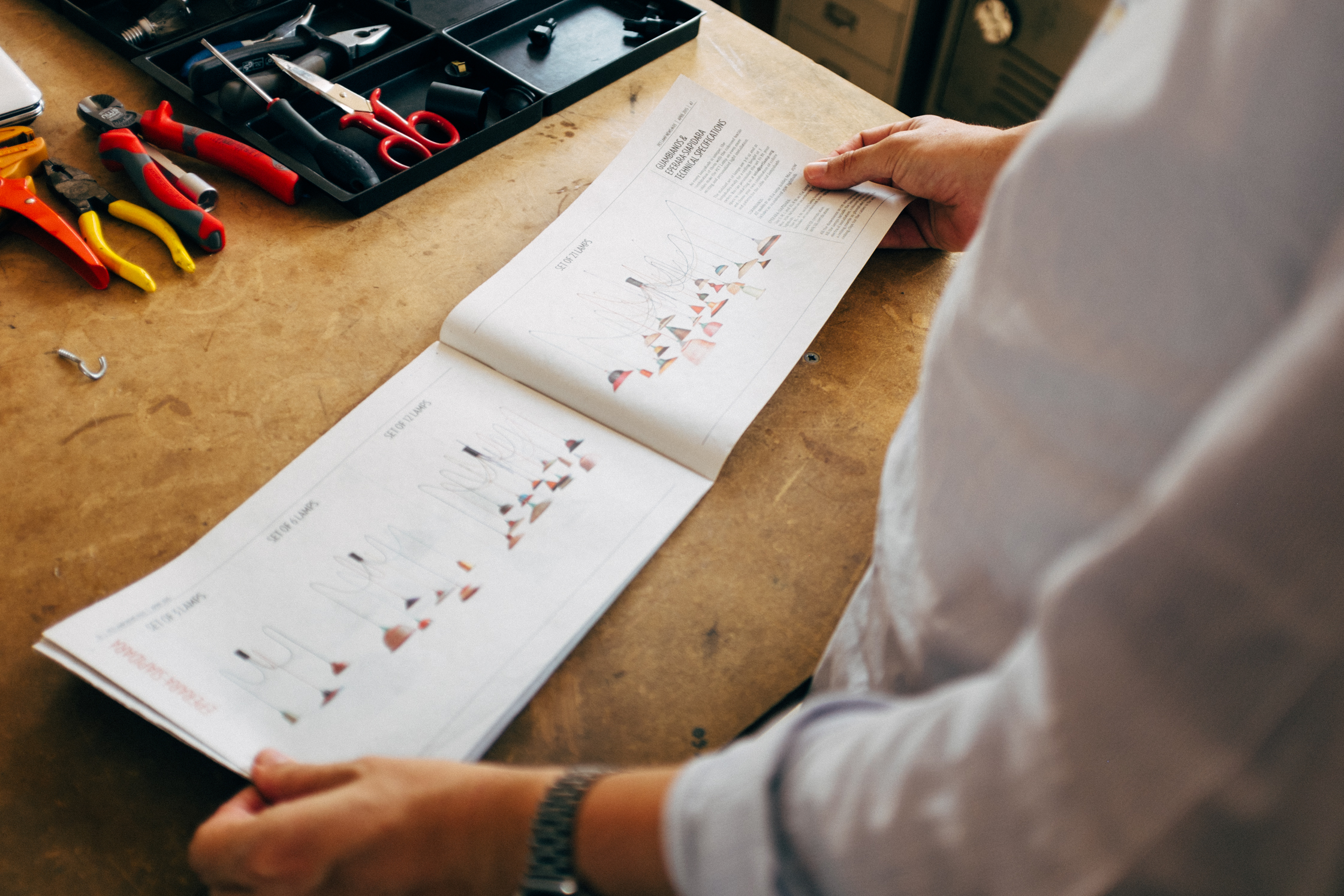

-
You studied at both Istituto Europeo del Design in Milan and Central Saint Martin’s School in London. Were there notable differences between the two cities and schools in terms of approaches to design?
Both are deeply ingrained in me. From my stay in Milan, I picked up on a vast culture of post-war Milanese design and the importance of the relationship between the brand and the designer; and the importance of the concept and the functionality, as well. From my London years, I came to understand design as an opportunity for entrepreneurship, an idea that is very present in my studio today, where we produce and sell our designs. This is something very important to the studio because I started just as the economic crisis arrived and the big companies began to have a more cautious approach towards new designers.
-
Tell us about the first piece you produced after graduating.
After St. Martin’s, I designed a little object with resin – it’s a cube with a bulb, and it was meant to explore the relationship between sculpture and design. It’s called Glow Brick, and it was produced by a firm in the U.K. called Suck UK. It’s still in production. That was the project that allowed me to start doing my own things.

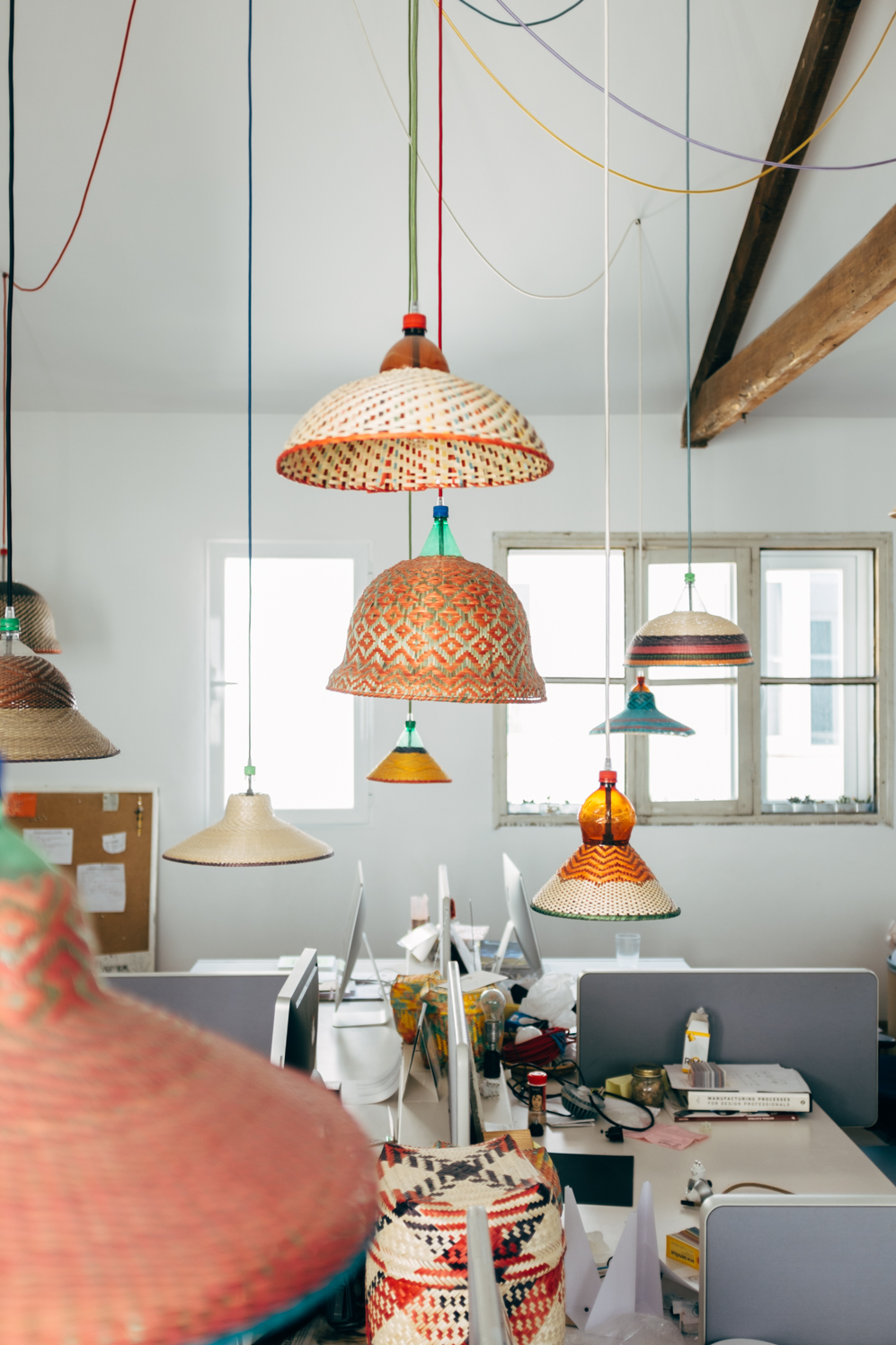

-
These days, you’re best known for your PET lamp, a project that combines industrial lighting with regional textile crafts, that had its beginnings in Colombia. What brought you there, and how did the idea for the lamps come about?
My daughter is half Colombian, so I’m linked to the country in that way. I was on a summer holiday with a group of artists who were doing a project with plastic bottles in the Amazon River. At the time, I was looking for a project to do in Colombia in order to get to know the country better and to get involved in the crafts community, which is very rich there. So that’s how it all started. We developed the first lamp prototypes here in Madrid and got in contact with a public organization, Artesanías de Colombia, whose aim was to keep craftsmanship alive in local communities. Together, we did our first workshop there in 2012.
Now, we’ve moved on to Chile and Ethiopia. We wanted to see how the concept would be interpreted by different cultures. Plastic bottles are everywhere, after all, and basket-making is one of the oldest crafts techniques humans have developed. It’s even older than pottery. The project’s been an excuse not just to get to know Colombia better, but to get to know the world. It’s become more than just a design project. It’s a way of meeting people, of seeing the world; not as a tourist, but as a local.


-
Have you had the opportunity to meet the artisans you’re working with?
All of them. We’ve gotten to see how their lives have changed since becoming involved with the project. In Colombia, the artisans used to come to the place where we’d meet, walking from three hours away. And now they have motorbikes, or they come by taxi. It’s really changed the way they live in the city. They’ve built up their own small economy. They’re professionals now – they can work legally; they can do invoices. The project’s become a starting point for building up their own small businesses.
-
Has this changed the way you’ve approached your work moving forward?
Yes. I believe that designers shouldn’t necessarily have a signature style – instead, they should have a method of work. The PET lamp project was a response to a certain brief, and when I receive a different brief, I’ll have a different response. Every project certainly leaves a very strong impact. Each one gives you new tools and new ways of understanding global problems, as well.
“My generation of designers – we’re a bit overwhelmed by how many things are being produced these days, and how much has already been done. My worry when I design another chair or another lamp is: should it really exist?”
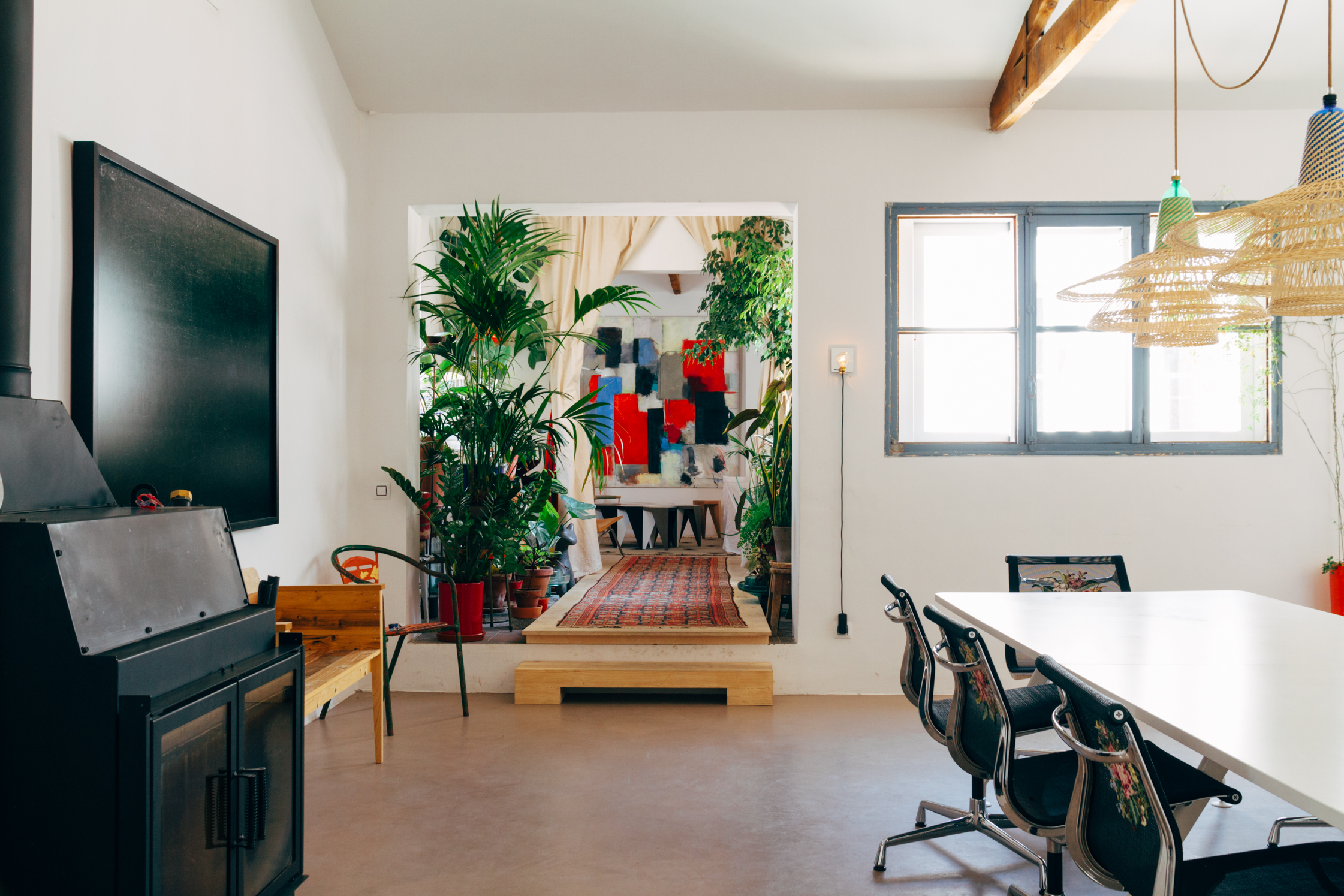




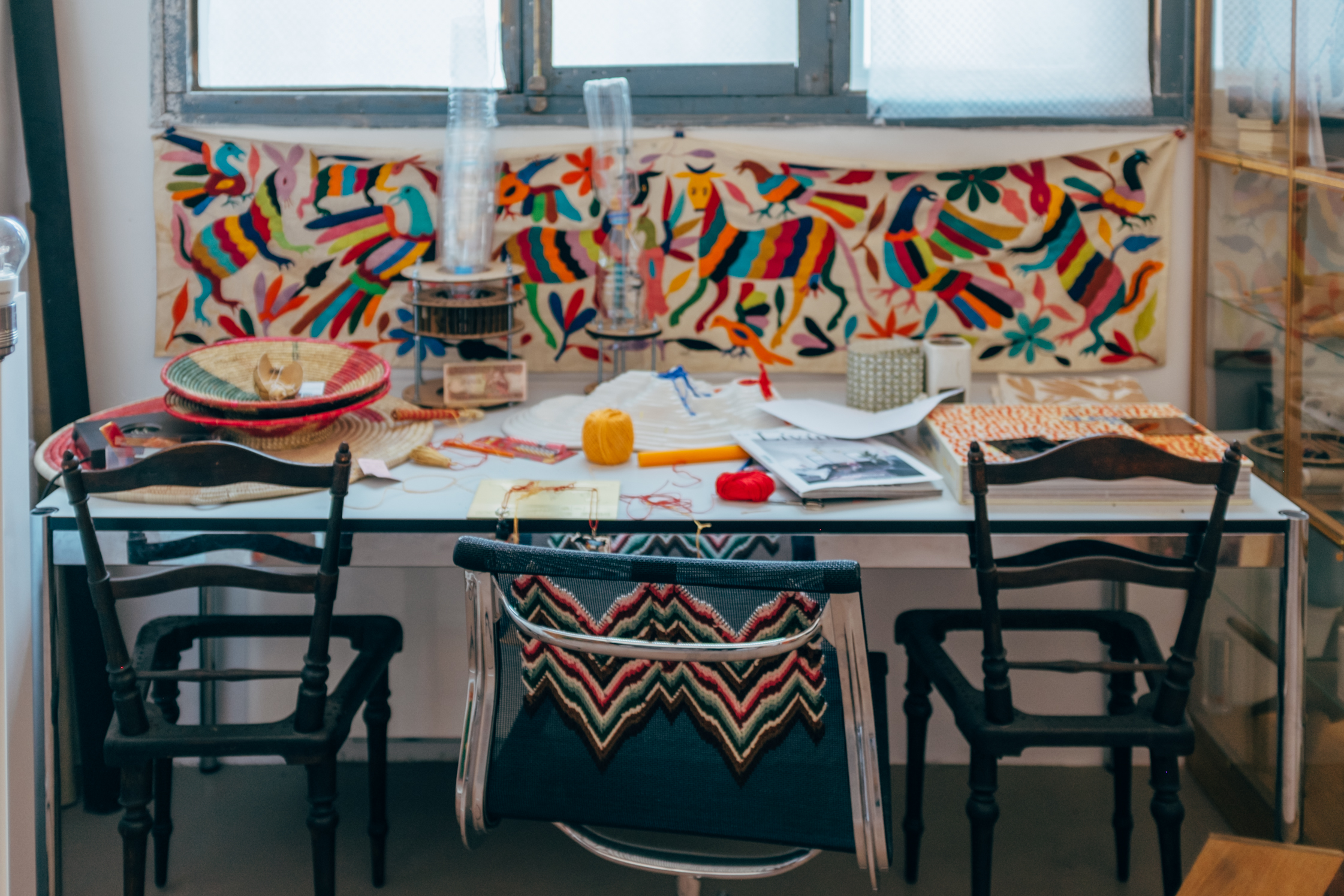
-
How do you see the project continuing to evolve?
It’s become quite big, so it’s not as easy to handle as before. We have an organization here in Madrid that runs the three projects we have in Colombia, Chile and Ethiopia, and we’re getting approached by different organizations and people who are interested in developing their own projects in other countries. In 2016, we’ll be working with a museum in Victoria on a project with an aboriginal community in Australia. We’re also hoping to do workshops in Kyoto and Cape Town. At this point, the project has its own life – if someone is interested in doing the project elsewhere in the world, he can contact us.
-
Did you always intend to incorporate public and private spaces within your work-living space?
It’s natural to the activities I do here. During the day, we use the table as a meeting place for the seven people who work in the studio, and in the evenings, I use it for dinner with friends. The hammock is sort of a psychological border, like a barrier that divides the public and private sides. I included some curtains that I can close for privacy and even a doorbell by Droog Design. The bird there, Pepe, is free to get out of the cage and fly around whenever he feels like it.


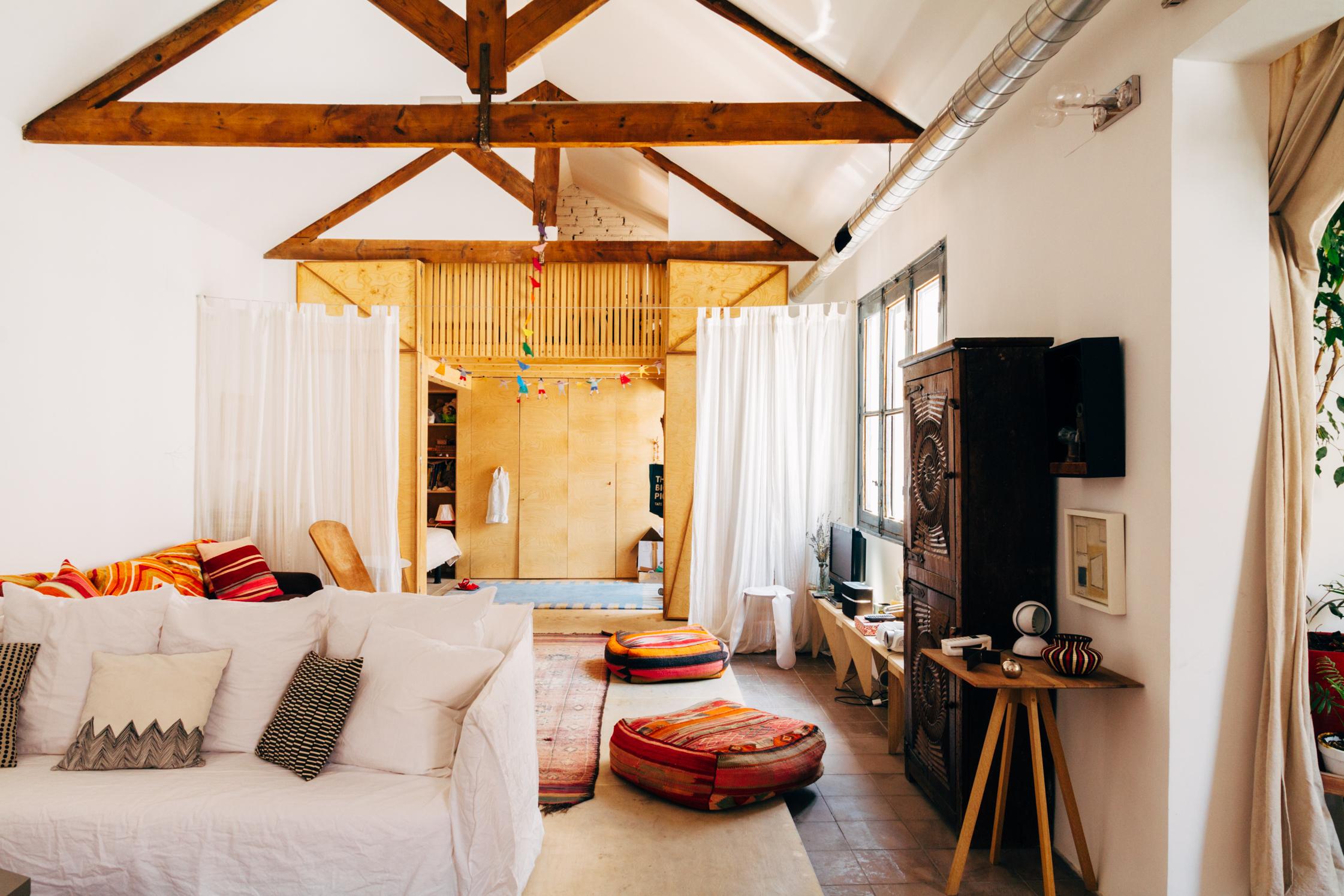


-
Tell us about your bedroom, and your daughter’s little house.
I designed my bedroom differently from the rest of the house, which is really open. My little space is just a minimal wooden cabin, very quiet and relaxing. And the little house is a ‘home within a home’ that I designed for Sofia. It even has a tree trunk inside. She can climb upstairs and has her little kitchen and playroom. She has her privacy, but she can watch what I’m doing from the upstairs window, which opens to the living room.
-
What items are most meaningful to you?
The three things that come with me everywhere are my books, my music and my plants. There are plants that have been with me for ten years, from Barcelona to Madrid. My books and my CDs are, at the end of the day, things which many would think are obsolete. I could have replaced them, but instead, they are things that I really value.

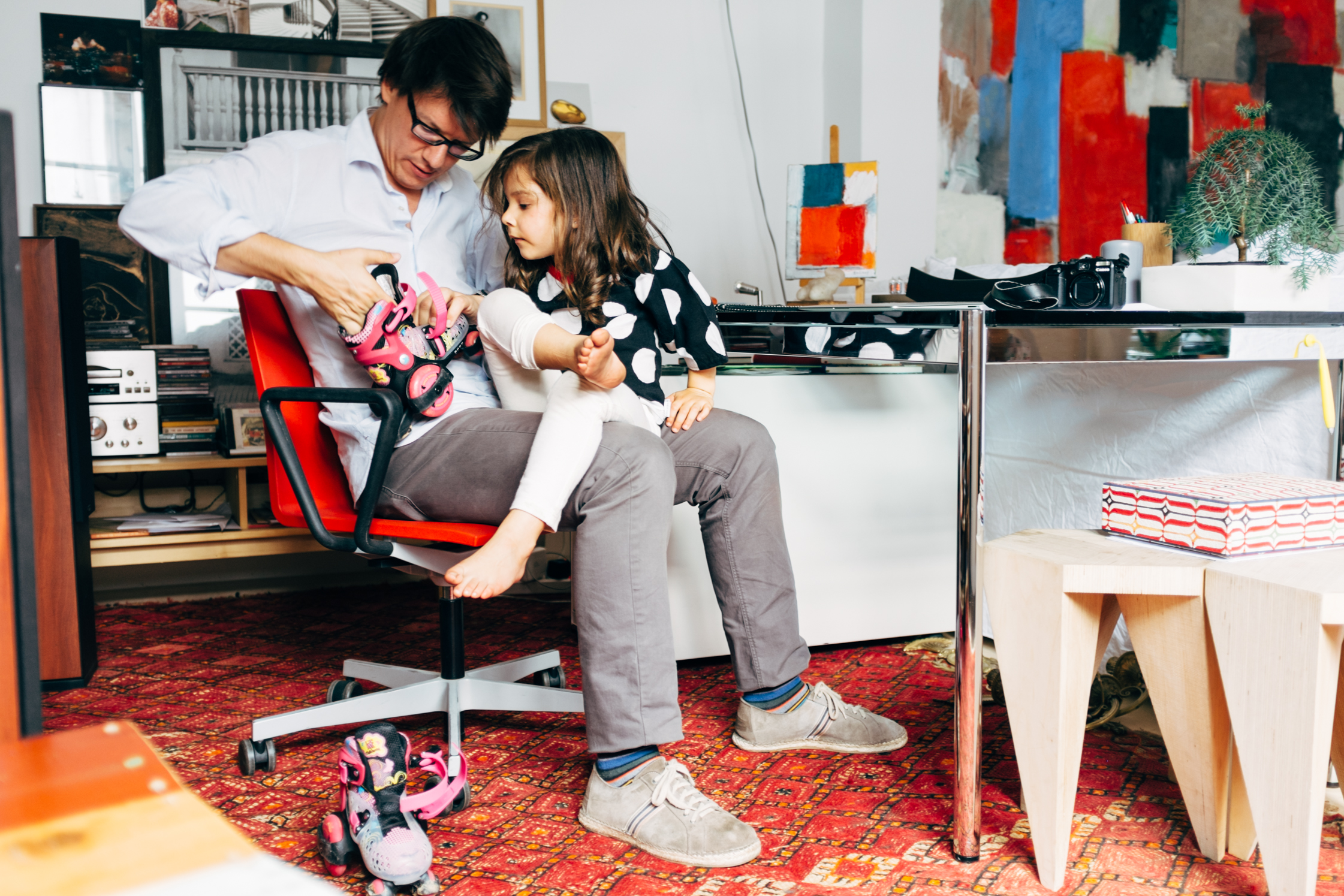
-
What kind of books do you find yourself gravitating toward most often?
I buy many art books. In terms of literature, I read more essays than novels. Right now, I’m reading a book by a Korean philosopher who lives in Berlin, which I’m finding quite interesting (Die Müdigkeitsgesellschaft by Byung-Chul Han). These books are a continuous reference in my work. I believe very much that you must buy a book the moment you feel an attraction to it. If you are looking around at a book shop and you feel attracted to a book, you should buy it then and there. If you buy it five years later, it will lose that attraction you felt for it. All of those books in my shelf I’ve felt that way about. I’ve built the way I think around them. And I have a very bad memory, so they are a way to keep track of my ideas.
-
What about music? Who’s been your greatest inspiration?
I like all kinds of music. Bob Dylan is a strong inspiration for me. His life and work are so connected, and what he does is so genuine. He’s always reinventing himself; he’s always in search. He’s not trying to do ‘beautiful’ music. I identify with that. As a designer, I’m not particularly interested in comfort. I believe that a bit of cold and hunger keeps you alert and alive.




Find out more about Alvaro’s wide spectrum of projects and creations on his website.
This portrait is part of our ongoing series with Vitra. Visit Vitra Magazine to find out more about Alvaro’s exciting approach to interior decoration. Look for more of our stories in Madrid.
Interview: Ana Domínguez
Photography: Erea Azurmendi & Adrian Cano Franco

